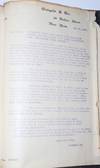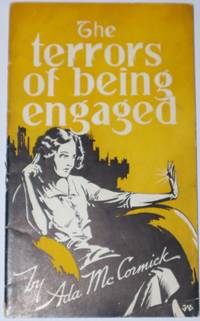Carousel content with 1 slides.
A carousel is a rotating set of images, rotation stops on keyboard focus on carousel tab controls or hovering the mouse pointer over images. Use the tabs or the previous and next buttons to change the displayed slide.
-
 Slide 1:
Slide 1:
-
 Slide 2: no title
Slide 2: no title -
 Slide 3: no title
Slide 3: no title -
 Slide 4: no title
Slide 4: no title -
 Slide 5: no title
Slide 5: no title -
 Slide 6: no title
Slide 6: no title -
 Slide 7: no title
Slide 7: no title -
 Slide 8: no title
Slide 8: no title -
 Slide 9: no title
Slide 9: no title -
 Slide 10: no title
Slide 10: no title -
 Slide 11: no title
Slide 11: no title -
 Slide 12: no title
Slide 12: no title -
 Slide 13: no title
Slide 13: no title -
 Slide 14: no title
Slide 14: no title -
 Slide 15: no title
Slide 15: no title -
 Slide 16: no title
Slide 16: no title -
 Slide 17: no title
Slide 17: no title -
 Slide 18: no title
Slide 18: no title -
 Slide 19: no title
Slide 19: no title -
 Slide 20: no title
Slide 20: no title -
 Slide 21: no title
Slide 21: no title -
 Slide 22: no title
Slide 22: no title -
 Slide 23: no title
Slide 23: no title -
 Slide 24: no title
Slide 24: no title -
 Slide 25: no title
Slide 25: no title -
 Slide 26: no title
Slide 26: no title -
 Slide 27: no title
Slide 27: no title -
 Slide 28: no title
Slide 28: no title -
 Slide 29: no title
Slide 29: no title -
 Slide 30: no title
Slide 30: no title -
 Slide 31: no title
Slide 31: no title -
 Slide 32: no title
Slide 32: no title -
 Slide 33: no title
Slide 33: no title -
 Slide 34: no title
Slide 34: no title -
 Slide 35: no title
Slide 35: no title -
 Slide 36: no title
Slide 36: no title -
 Slide 37: no title
Slide 37: no title -
 Slide 38: no title
Slide 38: no title -
 Slide 39: no title
Slide 39: no title -
 Slide 40: no title
Slide 40: no title -
 Slide 41: no title
Slide 41: no title -
 Slide 42: no title
Slide 42: no title -
 Slide 43: no title
Slide 43: no title -
 Slide 44: no title
Slide 44: no title -
 Slide 45: no title
Slide 45: no title -
 Slide 46: no title
Slide 46: no title -
 Slide 47: no title
Slide 47: no title
Full Leather (morocco) binder. Stab binding, with two brass screws
1923 · New York
New York: Colgate & Co, 1923. Full Leather (morocco) binder. Stab binding, with two brass screws. Very Good Minus. Huge binder of a wide range of cosmetic and personal hygiene products of Colgate & Co., the predecessor of today's Colgate Palmolive. The binder is quarto-sized, measuring 28.5 by 21cm, and it is 5.5 cm thick. Containing 264 single sheet product flyers, or plates, 48 of which are in full color. The plates are printed on the rectos only, and the color plates are on a thicker paper stock, with a slight glossiness. Virtually all the plates a single product, with one to three photos, and most often, two photos, typically of the product (truncated) itself -- the jar, bottle, can, tube or whatever it comes in, and then a second shot showing the outer packaging. There are a few plates showing display fixtures, display arrangements and the like. In addition, in the back of the binder are a dozen sheets regarding cooperative dealer plans, meaning how to coordinate the promotion of Colgate products with major dealers or retailers carrying its products. Finally, there are two mimeographed copies of a single sheet typed letter which served as a cover letter to dealers (retailers) about Colgate's new cooperation plan, and it is possible might have also been sent in conjunction with binders such as this. 11 tabs, with abbreviations for categories. T.S. for "toilet soap", but what today we simply be labeled soaps -- 54 plates. "Shav", for shaving soaps -- 13 leaves. "Ext", for Extracts -- 52 plates, 15 in color; T.W., for Toilet Water -- 19 plates, 2 in color; "G. BXS", for Gift Boxes -- 25 plates, 11 in color; "CRMS", for Creams -- eight plates, one in color; "T.P.", which we don't know what it abbreviates, but containing smelling salts, glycerine -- 4 plates; "DENT" -- now what can that be for? Hmm. -- 9 plates; "PWDS", or Powders -- 49 plates, 3 in color, although two of these belong in another tab; "VAS", or Vaseline -- 36 plates, one in color; "HOTEL" -- 5 plates, 2 in color. The actual use of a binder such as this is something we can not be 100 sure of, but we suspect it was used both in-house, as a easy reference of current products, as something to show outsiders such as dealers, maybe investors, or whoever else the company had relations with. It would certainly have been in the hands of the company's sales staff to show customers. And it is possible this type of binder was sent to dealers, as we already suggested. We would note that the plates are numbers, but the numbers skip around wildly and are of no use in terms of pagination of the binder.The advantage of a stab binding is that sheets could be added or subtracted with ease, as products and/or their graphics changed over time. We base the 1923 dating on the cover letter in the back, but the individual sheets contained within could be earlier or later. Given the graphics, the style of packaging, etc., with the Art Nouveau and Art Deco sensibilities and aesthetics ubiquitous, it is safe to say that 1923 is a good mean average for the date of all the material. There is a note on a yellow bound sheet at the front that this was a gift to a longstanding employee in 1978, someone who began at the company in 1931. Obviously, the gift was meant as a sentimental relic that captured past glory. The binding is heavily rubbed but structurally solid. The plates are soiled, generally lightly, and there are a good number of plates with pencil notes and stray scrawls. Much of this can be removed, if one wishes to make the effort. One should not expect to get rid of all the dusty-looking soiling, but one can certainly mitigate it, again, with effort. The sheets in the back have edge chips and roll up at their right edge.
(Inventory #: 20097)

![[Trade Catalogue] Niagara Blue Ribbon Wall Paper. Siess Wall Paper & Book Store. Williamsport, Penna](https://d3525k1ryd2155.cloudfront.net/h/381/302/1694302381.0.m.jpg)
